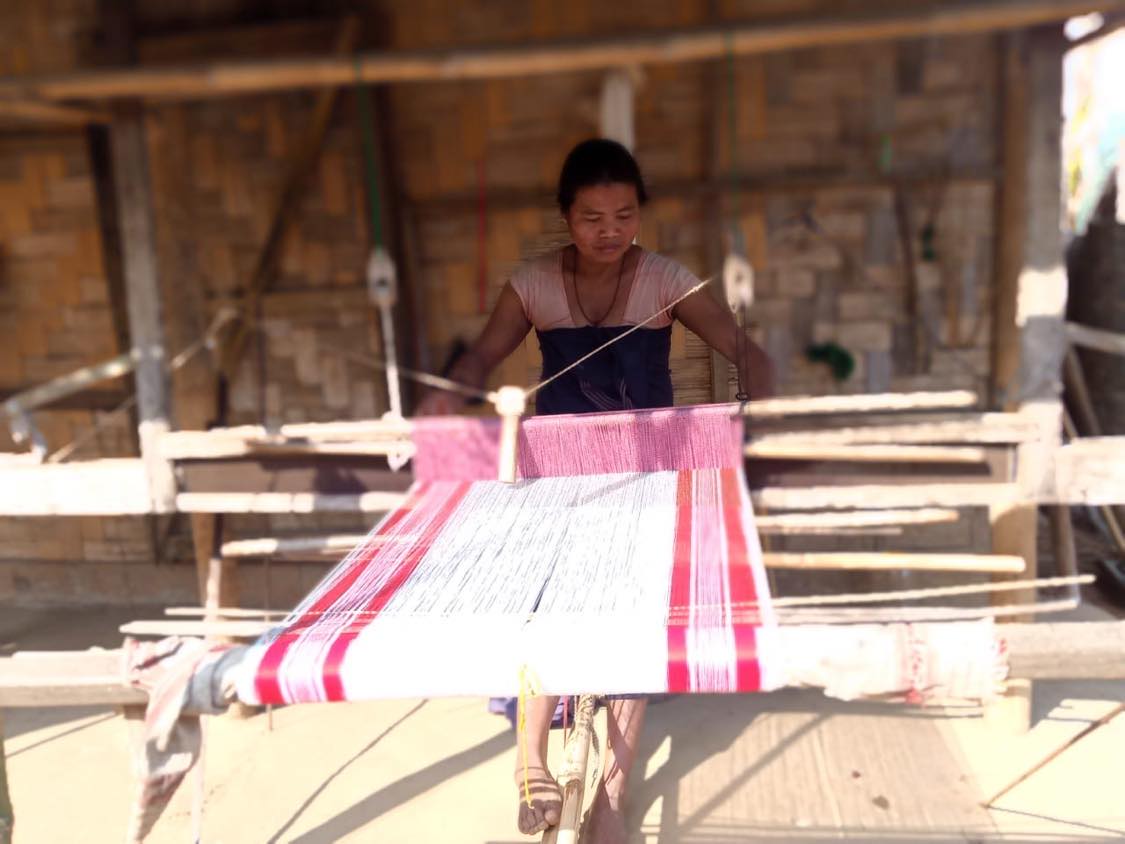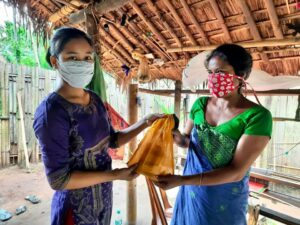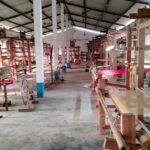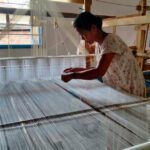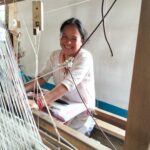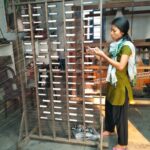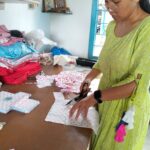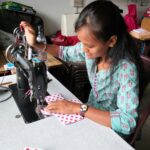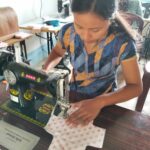As we approach the end of 2023, we want to examine a key insight WECO has had over the past three years, now that there is finally some distance between us and the height of the pandemic. One of the most impactful approaches we’ve implemented with our partners throughout this time has been building sustainable social enterprises. We strongly believe social enterprises are an evolution in the way resources are distributed, primarily because they have the potential to create a self-sustaining financial engine that develops over time.
This unique approach to doing business intertwines financial success with a commitment to addressing a pressing social need. Unlike traditional business models that are driven primarily by making a profit, social enterprises leverage entrepreneurial principles to achieve their mission for both economic value and meaningful social change. They likewise provide a means of sustainability for nonprofit initiatives by maintaining their financial viability. When done holistically and ethically, social enterprises play a pivotal role in fostering inclusive economic development, empowering marginalized communities, and promoting systems change.
“They are change agents, in the sense that their mission encompasses systemic solutions to structural problems rather than aid, which leave the respective institutions in place.”*
The caveat to social enterprise creation and implementation, we would argue, is also a strength: they are dynamic in that their success is reliant on the infrastructure and conditions in which they are built. In other words, when exercising entrepreneurial approaches in impoverished areas, there are a host of unforeseen challenges and roadblocks that can (and likely will) occur. Patience and flexibility are key during the early stages. But, this doesn’t necessarily weaken the case for why organizations should support them.
“Social entrepreneurs are diverse, drawing from various sectors and sources in their attempts to address social and environmental problems, which further underlines their adaptability and value.”*
This adaptability is critical to help navigate the social and environmental problems surrounding complex issues like poverty. For funders, connecting local entrepreneurs with the means of creating innovation—as they define it—will allow them to build up social capital that is both relevant and sustainable for their communities.
Building Sustainable Partnerships for Lasting Impact
When thinking about how nonprofit practitioners could promote social enterprise initiatives, specifically to business audiences who are—understandably—concerned with the metrics or social returns that would come from their investment, it can be difficult to wrap into a nicely packaged explanation. This is mostly due to the fact that, when social challenges are tied to business, there is typically unmitigated external interference (or ‘risk’ if you like) that can’t be controlled or accounted for until encountered in real life. Again, while this may at first appear to be a weakness, we argue it in fact is a strength. The ability to navigate these unforeseen twists and turns adds to a social enterprise’s agility and creates resilience for it to better respond to the next challenge that will inevitably come, as social inequity is deep and penetrates into crevices that are hard to see from the outset.
Because of this, to be successful—especially in severely under-resourced areas—social enterprises require substantial support in order to create the possibility of longevity. Looking at it this way, the ‘market’ for social impact is precarious, under-resourced, and tied to power imbalances that often make more challenge than opportunity. To work with communities in poverty is to establish trust and confidence while building avenues for their long-term success, using the competencies and skills they already possess and catalyzing their efforts with resources and opportunities. So how can social enterprise initiatives make progress? And what’s needed to convince funding partners their support is a good investment?
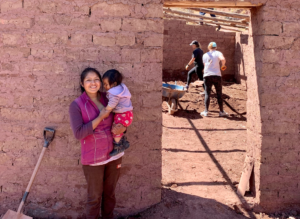
For starters, collaborating with or supporting social enterprises can enhance an organization’s brand reputation or CSR/ESG initiatives. As consumers and philanthropists alike increasingly prioritize socially responsible businesses, aligning with social enterprises can bolster company image, leading to increased customer loyalty. But doing good for PR isn’t good enough, nor do I think does it get to the heart of what makes social enterprises so significant. Social enterprises are by definition innovative, tackling complex social problems in often urgent circumstances. By partnering with social enterprises, businesses themselves can gain valuable insights and fresh perspectives on the array of challenges they face, ultimately improving their own business practices, product development, or market competitiveness. To us, the most compelling reason to engage with a social enterprise, and support its early growth toward self-sustainability—if that is the end goal of the initiative—is to be a part of the evolution of aid: bridging the nonprofit and for-profit sector into a meaningful, sustainable new sector, one that offers a more balanced approach to both business and philanthropy. This vision may be years away from becoming a widespread reality, but a world where a company profits only (or especially) when equity is being restored is a vision to work toward.
Certainly there are challenges to this process. Choosing which social enterprise to support can be difficult, and requires a thoughtful, strategic approach. A good place to start is mission alignment, and ensuring there is a straightforward method of measuring impact. Key questions to ask are: How many people does the project serve? Does it increase income, provide necessary meal services, give startup funding or raw materials to kickstart production of market goods? And so on. There’s not a one size fits all for impact measurement, so it’s important to stay creative and flexible based on the needs of the communities being served—otherwise there is significant risk of creating more work for those who are already overworked and under-resourced.
Sustainability is another angle to keep in mind, as long-term partnerships will bring the most benefits to each side of the equation. Many social enterprises will need at least a year or two to get up and running. Flexible funding can create opportunities for the entrepreneurs to experiment and discover what works without the added pressure of working under time constraints or limited resources. Also important to consider is the potential for members of the funding organization to collaborate with the project through volunteer or engagement opportunities. Perhaps they could provide expertise, educational resources, access to helpful markets or networks, or get involved in hands-on project work.
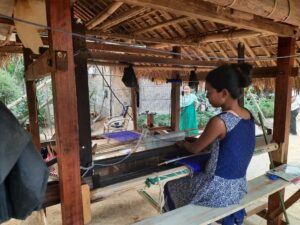
For WECO, choosing to support social enterprises has been critical to our project work, especially since the start of the pandemic. One in particular—our artisan project in India—has been of vital importance. Our local partner in this region is Parijat Academy, a non-profit that provides holistic education to children from socio-economically disadvantaged communities in the outskirts of Guwahati, Assam, where access to education is limited. Their vision is to bring accessible, flexible school programing to underserved children. They currently serve over 350 students from 10 tribal villages who receive either free or highly subsidized pre-primary to high school education. Founders Uttam and Aimoni Teron were inspired to start the school when they realized parents couldn’t afford to continue sending their children to school. As they expanded, they began providing families with educational programing such as health awareness workshops and trainings.
In 2020, Parijat and WECO partnered on further developing their services to include a menstrual health and education program, to raise community awareness and help keep girls attending school, as menstruation stigma is still a prevalent issue for the region. The project fills a gap in the community in two key ways: it creates and distributes eco-friendly, reusable sanitary pads to women and girls living in the school’s neighboring villages; and, it includes information pamphlets, workshops, and information sessions on menstrual health to help break the cultural stigma surrounding menstruation. Parijat teachers and older students serve as ambassadors of this program, and are trained on how to make the reusable pads and perform outreach. To date, our partners estimate we’ve distributed approximately 10,000 pads to 2,000 women and girls living in 7 villages.

Once the pandemic hit, we realized we would need to shift priorities with all of our partners to focus almost entirely on providing emergency relief for the remainder of the year/early 2021. Because many of the communities we support work in the informal economy, they did not receive government support, so were entirely dependent on humanitarian efforts for food and medical supplies. As conditions slowly improved, we began planning with our partners on how to build more resilience in their communities, and landed on two key social enterprise projects: a coffee cooperative social enterprise in Costa Rica (read more about this project here), and an artisan social enterprise in India, with Parijat.
In India, we developed an initiative that trains women from the Parijat community on traditional weaving, so they can make a variety of materials to sell in the markets. As the weavers perfect their craft and create goods to sell at the Parijat weaving center, they make a steady income, blending skills development with income-generation. The profits from market sales then go back toward buying raw materials and continuing to pay the women for their labor as the initiative grows. The project is in the start-up phase as Parijat continues to assemble all of the necessary materials to get beyond the point where the project is breaking even, which includes adding more weaving sets and providing the women with enough supplies and raw materials to produce more goods to sell. When we asked Uttam and Aimoni why this initiative is so critical, they responded that it’s paramount to create new revenue streams for impoverished communities still (and very slowly) bouncing back from the economic impacts of COVID-19. Prioritizing income-generating projects like this will enable community members to establish deep roots for their long-term financial success, over time limiting the amount of aid and food relief they require in the future.
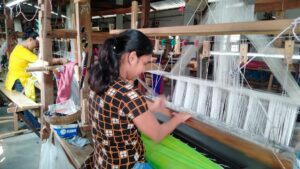
As we look toward 2024, our goal is to provide the rest of the start-up funding necessary for our initial cohort of weavers and to complete our first round of impact measurement, so we can fine-tune and adjust our process moving forward.
Resources
*Alderson, M., Clegg, P., Halsall, J. P., Hyams‐Ssekasi, D., Mswaka, W., Oberoi, R., Snowden, M., & Winful, E. C. (2022). Social enterprise as a model for change: Mapping a global cross‐disciplinary framework. Entrepreneurship Education, 5, 425–446.
Halsall, J. P., Oberoi, R., & Snowden, M. (2019a). Mapping the role of social enterprise: A sustainable model for future? In R. Kar (Ed.), Towards a sustainable future: Cross cultural strategies and practice. Bloomsbury Publishing.
Halsall, J. P., & Snowden, M. (2014). Community development: A shift in thinking towards heutagogy. International Journal of Multidisciplinary Comparative Studies, 1(3), 81–91.
